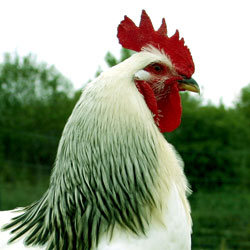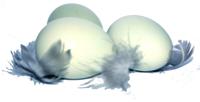The Origins
Hens have existed for tens of thousands of years in their natural habitat, and have lived close to humans for nearly 8000 years. Their roots go back to the dinosaurs. After centuries of domesticity, an uncanny relationship has developed between man and bird, but they haven’t changed a great deal since those early jungle days. The fiery red comb, the scaled legs leading to strange horny toes, and the primitive loping gait, all add to the captivating charm of this extraordinary creature from the past, which has become an integral part of our lives in the present.
Whether you love them of hate them, you cannot escape them; they are more numerous than any other bird on the planet. The world’s twenty four billion chickens provide the human race with meat and eggs at an ever increasing rate. Throughout the ages, hens have occupied a position of social and religious importance all over the world, as a symbol of protection in religious art and script, or even as a channel for evil spirits.Today, hens play a part in agriculture, the development of business and the advancement of science. They have entered our language, art and culture, and are subjects of countless metaphors, idioms, customs and jokes.


